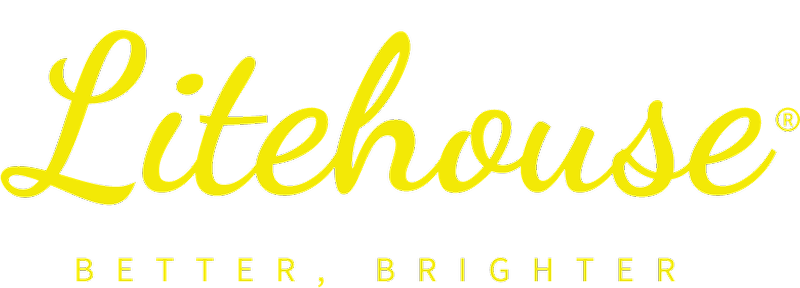Imagine illuminating your space with beautiful, eco-friendly lights powered by the sun!
At Litehouse, we're committed to providing innovative and efficient solar solutions. This article aims to shed light on how our solar panels work and offer valuable tips for ensuring their longevity. By understanding the basics of our solar panel operation and following best practices, you can maximise your investment and enjoy the benefits of clean, renewable energy for years to come!
How Litehouse Solar Panels Work:
Our Litehouse solar lights harness the power of the sun to provide reliable and energy-efficient illumination. Equipped with built-in light sensors, they automatically turn on at dusk and off at dawn, ensuring optimal use. You can also customise their operation with adjustable settings on the on/off switch.
Features & Benefits of the Litehouse Solar Panel:
- ON/OFF Switch: Our solar panels have an ON/OFF switch located behind the solar panel to control their operation. Whether the switch is ON/OFF the solar panel is actively collecting sunlight and charging the battery. When the solar panel is ON, light sensitivity is activated and your solar lights will automatically turn on as the sun sets. You can opt for a manual operation of your lights by keeping the lights OFF and only turn them ON when you use the lights - this does tend to increase the longevity of your solar panel.
- Mode Setting: Want to create a specific atmosphere? Our solar panel includes 4 mode options: Flicker, Slow Flicker, Solid On,
- Light Sensitivity: Our solar panels have built-in light sensors that automatically turn the lights on at dusk and off at dawn if your solar panel is turned ON. It uses intelligent sensors to turn on and off automatically, optimising energy consumption. When testing or setting up your solar panel make sure there is no direct light that will prevent lights from turning on.
- Dual Charging Capability: The most common charging method is of course via sunlight (8 hours for a full charge), however, you have the option to charge your solar panel via the USB-C port that is located on the side of the solar panel. (4 hours for a full charge)
- Runtime: A fully charged solar panel can provide up to 14-16 hours of illumination.
- Warranty: 2 Years
- Weatherproof IP: IP65
- Battery Type: Lithium-ion batteries
- Solar panel Type: Monocrystalline Silicon With ETFE Lamination
- Brightness Modes: 100%-75%
- Power Saving Mode: 8 Hours Automatic OFF (Can Be Deactivated)
- Inner Battery: 5V 4000mA
- Brightness Modes: 100%-75%
2 Types of Litehouse Solar Panels:
- Solar Panels for Bulb String Lights: These solar panels are removable and connected to the bulb string via waterproof connectors. This allows for easy replacement or maintenance of the solar panel.
- Solar Panels for Fairy Lights: Fairy lights typically have smaller, integrated solar panels that cannot be disconnected or replaced. This design makes them more compact but less versatile.
By understanding how solar panels work and the different types used in solar lighting products, you can make informed decisions when choosing the right lighting solution for your needs.
Best Practices for Solar Panel Longevity
- Cleaning: To keep your lights shining brightly and solar panel charging effectively, grab a soft cloth or sponge dipped in mild soapy water and gently wipe and wipe the surface of the string and solar panel. It is recommended to clean your solar panel at least once a month. Remember to switch off your lights as you clean by disconnecting the lights using the ON/OFF switch at the back of the solar panel.
- Visual inspection: Regularly check your panels for any signs of damage, such as cracks, discoloration, or loose connections.
- Environmental Factors: Weather conditions: Be mindful of severe weather conditions like hail, storms, or heavy snowfall, which can impact your solar panels.
- Shading and obstructions: Avoid shading or obstructions that can reduce the amount of sunlight reaching your panels.
- Optimal Battery Health:To extend the lifespan of your Litehouse solar panel, turn it off when not in use to preserve battery cycles. For best performance, ensure your lights have a full charge when in use. If you prefer to keep them on continuously, place the solar panel in direct sunlight for consistent charging.
- Avoid Excessive Pull: Handle carefully and avoid pulling on the wires or connection. Please treat them gently to prevent damage.
- Fully Charge Your Solar Panel: To use solar lights during the day, it is necessary to obscure the solar panel from direct sunlight. This can be achieved by covering the panel with a dark, opaque material, such as a towel. By blocking the light, the solar panel will be unable to generate electricity, and the stored energy can be used to power the lights.
- Store in a dry, shaded location: If you need to store your solar panel temporarily, place it in a dry, shaded location. Avoid storing it in direct sunlight, as this can degrade the solar panel over time. Remember to make sure your solar panel is turned OFF for optimal battery health when you use it again.
Troubleshooting Common Issues
If you notice a decline in your solar panel's output or experience system failures, try the following troubleshooting steps:
- Check for shading or obstructions: Ensure that nothing is blocking sunlight from reaching your solar panel.
- Inspect for damage: Look for any visible damage to the panel or cables.
- Contact customer support: If you're unable to resolve the issue, reach out to our customer support team for assistance. Give us a call or a WhatsApp on 066 2987604 or send us an email to info@litehouse.co.za
By following these best practices and understanding how your Litehouse solar panels work, you can ensure their optimal performance and longevity. Regular cleaning, inspections, and maintenance will help you maximise your investment in renewable energy and enjoy the benefits of clean, sustainable power!

